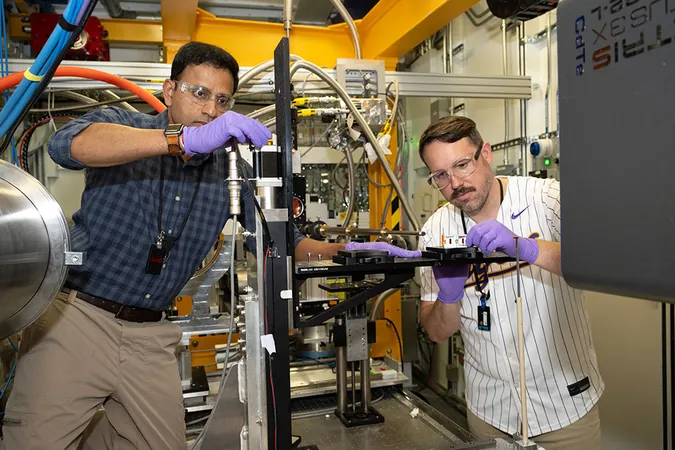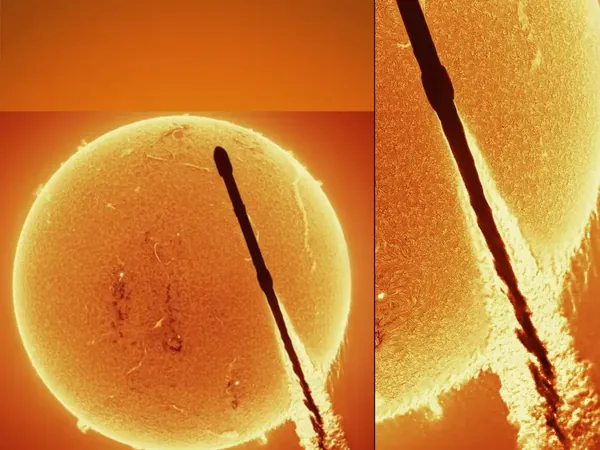
Breaking Ground: Scientists Unlock the Mysteries of Alpha Plutonium
2025-09-22
Author: Ming
A Deep Dive into Plutonium's Complex Nature
Since its discovery in the early 1940s, plutonium has remained a focal point for scientists intrigued by its enigmatic characteristics. This element is pivotal in groundbreaking energy technologies like nuclear batteries and reactors. However, its intricate electronic behavior results in fascinating phenomena, including unconventional behaviors at low temperatures and unique phase transitions that occur before it melts.
Challenging Research on Plutonium
Studying plutonium is notoriously difficult due to its strong electronic correlations and complex quantum effects, including spin-orbit coupling and radioactive decay. Furthermore, plutonium exists in various allotropes—forms of the same element with distinct atomic structures. Among these, the alpha phase (α-Pu) presents particularly complex atomic arrangements, making it an intriguing subject of investigation for a dedicated team of researchers.
Innovative Techniques and Groundbreaking Discoveries
A research team spearheaded by the U.S. Department of Energy’s Los Alamos National Laboratory took on the challenge of understanding atomic bonding in α-Pu using collaborative methods. By fusing advanced computer simulations with high-precision X-ray measurements, the team conducted groundbreaking plutonium experiments at the National Synchrotron Light Source II (NSLS-II). The collaboration with Milinda Abeykoon, a lead beamline scientist, allowed them to identify a mixture of bonding types, including evidence of covalent bonding—key to understanding the mechanical properties of α-Pu. Their findings were published in the journal Advanced Functional Materials.
Revealing the Bonds of α-Pu
Unlike the regular, symmetrical structure of plutonium's delta phase (δ-Pu), α-Pu's atomic arrangement is highly distorted, displaying a myriad of atomic bonding distances. Previously, theories suggested minimal covalent bonding in α-Pu, but this study has brought new clarity to this misconception. W. Adam Phelan, a nuclear materials scientist at Los Alamos, emphasized the significance of a detailed understanding of α-Pu's mechanical properties, which until now had been largely overlooked.
The Role of Safety and Collaboration
Working with plutonium, a rare and highly regulated material, brought significant safety challenges. Only a few milligrams of the element were brought on-site, and strict protocols ensured radiological safety throughout the experiment. The team utilized a custom containment system for the plutonium samples, while panoramic cameras provided direct observation during studies.
A Promising Future for Plutonium Research
With upgraded capabilities in their equipment, the team is set to return to further investigate α-Pu's structural properties in future experiments. Milinda Abeykoon noted the potential for new insights through methods like small angle X-ray scattering (SAXS) and wide-angle X-ray scattering (WAXS), which will provide a comprehensive understanding of atomic structure across various scales. Their continuing collaboration is fueling excitement about future discoveries in the world of nuclear materials.
The Bigger Picture: Implications for Energy Applications
This groundbreaking research complements broader efforts to understand how atomic structures influence the properties of complex radioactive materials, enabling innovative applications in energy technologies. With foundational insights established, the collaboration lays the groundwork for future investigations and collaborative projects at the Department of Energy, expanding our grasp of this elusive element.
This project highlights the creativity that comes from scientific collaboration, demonstrating how informal exchanges can lead to monumental advances in research. The discovery of new bonding dynamics in plutonium not only furthers our understanding of the element but also signifies a step forward in energy science as a whole.




 Brasil (PT)
Brasil (PT)
 Canada (EN)
Canada (EN)
 Chile (ES)
Chile (ES)
 Česko (CS)
Česko (CS)
 대한민국 (KO)
대한민국 (KO)
 España (ES)
España (ES)
 France (FR)
France (FR)
 Hong Kong (EN)
Hong Kong (EN)
 Italia (IT)
Italia (IT)
 日本 (JA)
日本 (JA)
 Magyarország (HU)
Magyarország (HU)
 Norge (NO)
Norge (NO)
 Polska (PL)
Polska (PL)
 Schweiz (DE)
Schweiz (DE)
 Singapore (EN)
Singapore (EN)
 Sverige (SV)
Sverige (SV)
 Suomi (FI)
Suomi (FI)
 Türkiye (TR)
Türkiye (TR)
 الإمارات العربية المتحدة (AR)
الإمارات العربية المتحدة (AR)